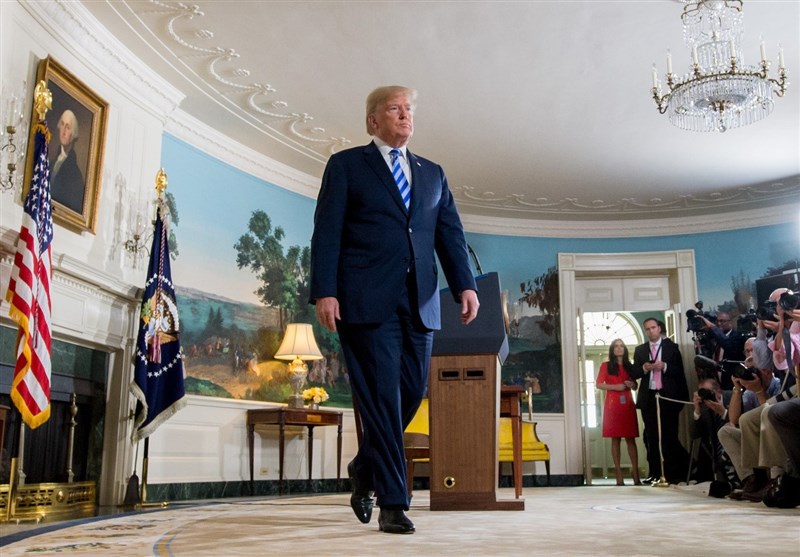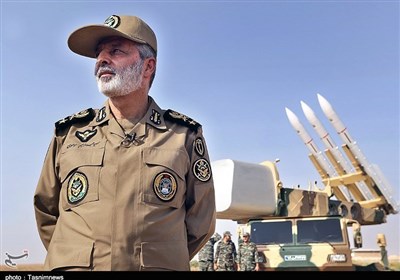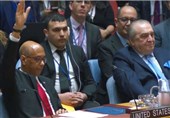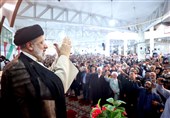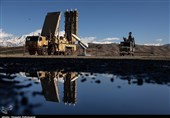Why US Withdrew from JCPOA Instead of Using ‘Snapback’ Mechanism
TEHRAN (Tasnim) – Despite his fierce criticism of the 2015 Iran nuclear deal, US President Donald Trump decided to pull his country out of the JCPOA rather than choosing a UN Security Council mechanism to terminate the agreement. But why did he not try to destroy the agreement?
In a speech from the White House on May 8, Trump pulled his country out of the Joint Comprehensive Plan of Action (JCPOA), which was achieved in Vienna in 2015 after years of negotiations among Iran and the Group 5+1 (Russia, China, the US, Britain, France and Germany).
The businessman-turned-politician had on various occasions called the nuclear pact a “disaster”, “the worst deal ever negotiated”, and an agreement that could lead to a “nuclear holocaust.”
But he simply walked away from the nuclear deal and used his presidential authority to reimpose US sanctions against Tehran instead of opting for the so-called ‘snapback’ mechanism to renew the United Nations sanctions on Iran through a UN Security Council resolution.
According to the JCPOA, “If Iran believed that any or all of the E3/EU+3 were not meeting their commitments under this JCPOA, Iran could refer the issue to the Joint Commission for resolution; similarly, if any of the E3/EU+3 believed that Iran was not meeting its commitments under this JCPOA, any of the E3/EU+3 could do the same.”
Articles 36 of the JCPOA says that if the complaining participants could not resolve an issue through a Joint Commission, ministers of foreign affairs, or even through an advisory board, and “if the complaining participant deems the issue to constitute significant non-performance, then that participant could treat the unresolved issue as grounds to cease performing its commitments under this JCPOA in whole or in part and/or notify the UN Security Council that it believes the issue constitutes significant non-performance.”
And according to Article 37, “Upon receipt of the notification from the complaining participant, as described above, including a description of the good-faith efforts the participant made to exhaust the dispute resolution process specified in this JCPOA, the UN Security Council, in accordance with its procedures, shall vote on a resolution to continue the sanctions lifting.”
“If the resolution described above has not been adopted within 30 days of the notification, then the provisions of the old UN Security Council resolutions would be re-imposed, unless the UN Security Council decides otherwise,” reads Article 37, which allows for a full raft of anti-Iran sanctions to resume automatically.
The key point in the snapback mechanism is that in case of a failure to resolve a dispute among the JCPOA parties, the UNSC would vote on a resolution “to continue the sanctions lifting”, meaning that a single veto from one of the UNSC members (most likely from the US) would end the sanctions’ lifting and slap the previous sanctions against Tehran again.
Moreover, the Security Council Resolution 2231, adopted in July 2015 to endorse the JCPOA, stipulates that “The Security Council decides, acting under Article 41 of the Charter of the United Nations, that, within 30 days of receiving a notification by a JCPOA participant State of an issue that the JCPOA participant State believes constitutes significant non-performance of commitments under the JCPOA, it shall vote on a draft resolution to continue in effect the terminations” of anti-Iran resolutions.
On the same day that Trump announced the US exit from the JCPOA, his national security adviser John Bolton said that Washington would also cease to abide by the UN Security Council 2231. “We are not using the provisions of UNSC 2231 because we are out of the deal.”
One of the reasons for Trump’s decision not to use the snapback mechanism could be lack of any excuse for accusing Iran of violating the JCPOA. Since coming into force of the JCPOA, the International Atomic Energy Agency (IAEA) has repeatedly confirmed Iran’s compliance with the deal.
The other probable ground for Trump to use only his presidential power to impose sanctions on Iran is that he may have seen US benefits in the JCPOA and in letting the deal continue between Iran and the other five parties.
The Trump administration seems to have a plan to deprive Iran of the benefits of sanctions lifting under the JCPOA and at the same time curb what it calls Iran’s “dangerous” nuclear program.
A possible scenario is that Washington could use its international influence and economic power to discourage others from working with Iran and threatening to fine companies having trade ties with the Islamic Reoublic.
In July 2014, The US slapped a record $9 billion fine on French bank BNP Paribas for violating US sanctions against Iran.
In July 2017, French oil company Total signed a $1 billion deal to develop the South Pars gas field in southwest Iran. But last week, the energy giant said it may pull out of the contract in light of the US exit from the JCPOA.
In an article published in the Foreign Policy in September 2017, Richard Nephew, known as one of the major ‘engineers’ of US sanctions against Iran, said, “Half of Europe, China, Russia, and a few other countries simply cannot deliver enough sanctions relief benefits to make up for the US secondary sanctions threat — even if waivers remain legally in place — to keep the Iranian satisfied with the tradeoff implicit in the JCPOA.”
Following the US exit from the deal, Iran and the remaining parties -Russia, China, Britain, France and Germany- have launched talks to save the deal.
